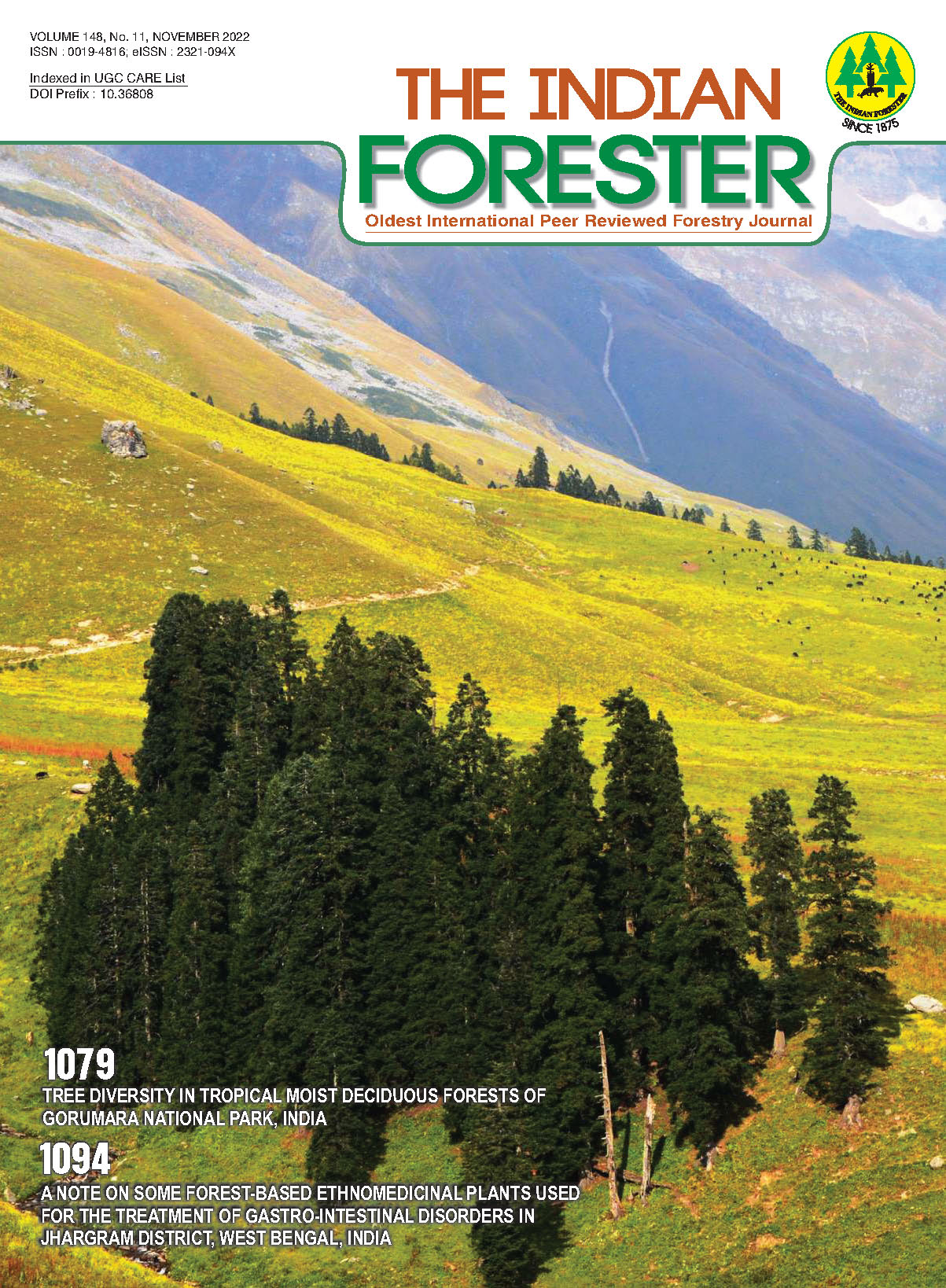Surface pattern of stem bark as characteristic features for identification of Elaeocarpus angustifolius Blume, the Rudraksha plant from India
DOI:
https://doi.org/10.36808/if/2022/v148i11/157923Keywords:
Elaeocarpus angustifolius Bl., Indian Rudraksha plant, E. tectorius, E. lacunosus, stem bark characters, dormant lateral budAbstract
no abstarct
References
Biswas S. Gupta K. and Talapatra S.N. (2016). A digitized database of bark morphology for identification of common tree species and literature study of bark phytochemicals and therapeutic usage. World Scientific News, 42: 143-155
Coode M.J.E. (1984). Elaeocarpus in Australia and New Zealand. Kew Bull., 39: 509-586.
Coode M.J.E. (2010). Elaeocarpus for Flora Malesiana: new taxa and understanding in the Ganitrus Group. Kew Bull., 3: 355-399.
Ghosh D. (2006). Bark is the Hallmark. Resonance, 11(3): 41- 50. Publ. Indian Academy of Science, Bengaluru.
Ghosh D. (2013). Living on the Bark. Resonance, 18(1): 51-66. Publ. Indian Academy of Science, Bengaluru. Global Biodiversity Information Facility (2019). Elaeocarpus tectorius (Lour.) Poir. https://www.gbif.org/species/4031476 accessed as on 16.01.2021.
Kalbande R.B. (2014). Digital visual bark- an image based tool for plant diversity research, diversity in bark supports in tree identification. International Journal of Life science and Pharma Research, 4(3): 17-24.
Meitei L.R. and Khuraijam J.S. (2019). Genus Elaeocarpus in Northeast India. NeBio., 10(1): 23-28.
Murti S.K. (1993). Family Elaeocarpaceae in India – Census and observations. J. Econ. Taxon. Bot., 17(2): 283-296.
Phoon S.N. (2015). Systematics and biogeography of Elaeocarpus (Elaeocarpaceae). Ph. D thesis, James Cook University, Australia.
Rai S. (2004). Rudraksha-Properties and biomedical implecations. Publ. Mrs. S.G. Kedadamath for ganga Kaveri Publishing House, Jangamwadimath, Varanasi, page 13.
Singh A.N. (2018). Recent trends in import and export of Rudraksha beads in India. Journal of Non Timber Forest products, 25(4): 127-130.
Srivastava A., Kumar B. and Srivastava S.K. (2017). On the correct identity and occurrence of Elaeocarpus ganitrus Rox. ex G. Don 'Rudraksha' in India. Indian Forester, 143(1): 76- 77.
Tang Y. and Fengklai C. (2007). In: Flora of China (eds. Wu, Z., Raven, P.H. and Hong, D.). Science Press Beijing and Missouri Botanical Garden Press, St. Louis. Vol. 12: 223-235.
Whitmore T.C. (1962). Studies in systematic bark morphology - i. Bark morphology in Dipterocarpaceae. Botany school, Cambridge, pp.191-207.
Wojtech M. (2011). Bark - A Field Guide to Trees of the Northeast. University Press of New England; 4/15/11 edition (12 April 2011)
Wojtech M. (2020). A Field Guide to Trees of the Northeast. Publ. Brandeis University Press, Waltham, MA.
Zmarzty S. (2001). Revision of Elaeocarpus (Elaeocarpaceae) Section Elaeocarpus in Southern India and Sri Lanka. Kew Bulletin, 56(2): 405-447.
Downloads
Downloads
Published
How to Cite
Issue
Section
License
Unless otherwise stated, copyright or similar rights in all materials presented on the site, including graphical images, are owned by Indian Forester.





